Once upon a not-so-distant time, the growing season for the Ann Arbor, Michigan-based Green Things Farm Collective followed a steadfast trajectory.
“We reliably had rainy springs and early summers, then hot and dry in late July and August, with the rains picking up again in September,” said Stacy Mates, Green Things’ seed company manager. “For a crop like lettuce seed, it was perfect.”
Within this decade, Mates has noticed that the previously familiar cycle “has changed dramatically. What we’ve gotten the last three years is drought in June and then torrential rains in July and August,” causing complete lettuce seed crop failures two years running. This year, after golf ball-sized hail, numerous severe thunderstorms and 75mph winds, a first crop of seed never matured. Mates treated a second crop with kid gloves, trellising the plants and covering them with shade cloth in hopes they’d survive another deluge. By late September, Mates had managed a solid harvest, with enough seed to sell.
Farmers are already fighting many battles in a growing season: beating back powdery mildew on cucumbers, hornworms devouring tomato leaves and strawberries plagued by verticillium rot. But for the farmers who grow the seeds that wind up in our seed packets and undergird our horticultural adventures, production has become ever more difficult.
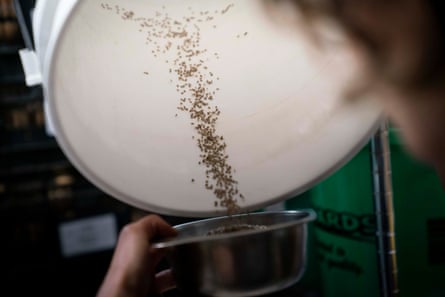
So difficult, in fact, that Green Things recently decided it would call it quits on growing for seeds. Mates can’t say for certain just how much climate change is to blame for production challenges, only that its role is undeniable.
“We are not having normal seasons any more”, said Lane Selman, an agricultural researcher at Oregon State University and founder of a seed-producer community called the Culinary Breeding Network. As the northern hemisphere shakes off its hottest summer on record, intensifying weather events threaten the variety we take for granted when we page through winter-delivered seed catalogues, dreaming of a bountiful spring.
Every seed company is facing these problems, but they probably wouldn’t want to tell you that
Seed industry consultant Alan Sparks
“Every seed company is facing these problems, but they probably wouldn’t want to tell you that,” said Alan Sparks, an industry veteran who consults for Baker Creek Seeds. “‘We’ve got everything in control! Everything’s gonna be OK!’ But it’s not OK.”
Green Things, which also grows vegetables, herbs and flowers, produced all the seeds in its catalogue. But many seed companies contract with individual farmers to grow at least some stock. One reason is that some crops need lots of space for a good yield. And not all seeds grow well everywhere. Furthermore, open-pollinated, non-hybrid seeds must be spaced sometimes miles apart – not just from similar varieties on that farm but on its neighbors’ farms too – to avoid cross-pollination and ensure they grow true to type. On Mates’ half-acre, she stopped growing carrots because they cross with a common weed, Queen Anne’s lace.
Seed farmers may grow hybrids or open-pollinated varieties; they do this in many locales, although Selman called the Pacific north-west “one of the greatest places to grow seed in the world” because of its (once) reliable weather. Some seed companies contract with farmers in Asia or India, for climatic and cost reasons.
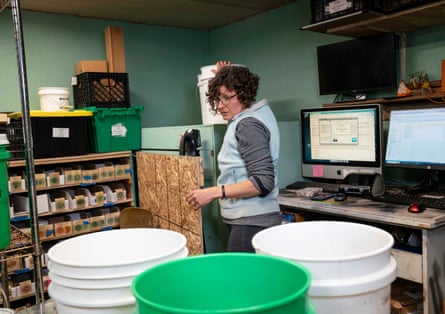
No matter where or how, it’s harder to produce seeds than market-ready vegetables. Seed farmers “have to be trained how to treat the soil, how to keep the plant healthy, when to harvest … And [seed is] a living product that you have to keep cool and dry” when you store it, said Sparks. Poor-quality seeds may have lower germination rates or be more susceptible to disease.
Plants grown for seed stay in the ground much longer than food crops. Growing cabbages to eat may require sowing in June and harvesting in October. “But that only represents a very small portion of a cabbage’s lifecycle,” said Nathaniel Talbot, who raises seed and vegetables at his Deep Harvest Farm on Whidbey Island, Washington.
A seed cabbage overwinters in the ground and keeps growing the next spring. A biennial plant, cabbage takes two years to bolt – that is, elongate in preparation for flowering. After it’s pollinated, the plant produces seed in a narrow pod that looks like a string bean; Talbot handpicks these pods, taps their seeds into a bucket after they’ve dried on tarps, then arduously removes the chaff by hand. Seed to seed, the process can take 14 months.
“There’s a lot more time involved [in raising seeds]. And with more extreme weather sprinkled through our lives, it’s a lot more time for things to go wrong,” said Brian Campbell, co-owner of Uprising Seeds in Bellingham, Washington. In 2021, a heat dome hit the Pacific north-west just as Campbell’s cauliflower came into full bloom. The cauliflower survived, but its pollen withered from 100F temperatures. “We ended up getting no seed from that crop,” he said.
Jim Gerritsen is an organic farmer in Bridgewater, Maine. He grows 20-plus varieties of organic seed potatoes, for mail-order customers and seed companies like Southern Exposure. After several years of drought, extreme wet is now the problem – although Gerritsen’s taken to chiseling up the soil ahead of planting to “divert rainwater into the subsoil away from the rhizosphere” where his potatoes are rooting and growing, he said.
Even if his spuds grow well, he still needs dry days for harvesting. “You dig on a Monday. Then on Tuesday, you get an inch of rain so you’re not digging,” he said. “You take Wednesday to dry out and then you get back in the field on Thursday; then you get another half inch rain on Friday. You’re not digging on Saturday because the ground [needs to] dry out, so maybe you don’t get back into the field until Monday. The harvest takes about 15 good days, but in a wet fall it takes [four or more] weeks to find 15 good days to dig in.”
With more extreme weather sprinkled through our lives, it’s a lot more time for things to go wrong
Brian Campbell of Uprising Seeds
Seed work isn’t finished after harvest, either. Broccoli seed, like cabbage seed, dries for a week before it’s cleaned and placed in packets. Explained Culinary Breeding Network’s Selman: “During that dry down period, if the seeds get wet, you are completely screwed.”
An heirloom nasturtium offered by Baker Creek, called purple emperor, was developed by a Japanese seed company that for seven years selected plants that consistently produced purple flowers. The first 2.2lbs of seeds yielded another 55lbs in Holland; those were then sent to a farmer in Punjab, India, for bulk production. Recently, Sparks learned that the water table in this “breadbasket” region of India is diminishing. On top of floods there in 2021 and a heatwave in 2022, in 2023 there was only a “30% of harvest [of all seeds] for this growing area,” he said. “It could be that in the next 10 years [no one is] able to grow there anymore.”
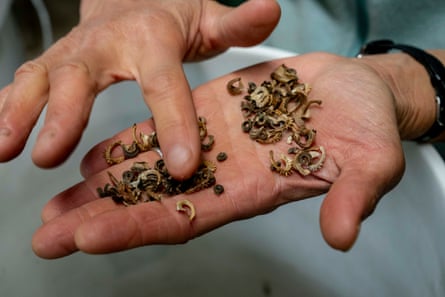
For large seed companies accustomed to adjusting locations, moving production to less temperamental locales may not be a daunting prospect – although Sparks said that training farmers to raise seed takes time and there’s already a critical shortage of people to do the work. But no matter where they live, seed farmers themselves don’t have the luxury of relocation. For them, the key to future resiliency is adaptation right where they are. For Mates of the Green Things Farm Collective, that means that more research into both open-pollinated and hybrid seeds is necessary for an uncertain future – and that especially holds true for small-scale and organic farmers. She said that farmers like her need seeds that are disease- and pest-resistant, grow in systems with few chemicals and little tilling, and survive a range of climate fluctuations.
As climate change becomes more chaotic, we want plants with a resilient enough genetic makeup that they can survive if not thrive
Nathaniel Talbot of Deep Harvest Farm
Hybrid varieties are bred for what’s called “vertical” resistance, to one pest or disease; growers of open-pollinated varieties save seed from plants that have “horizontal” resistance, meaning they can withstand a variety of regional stressors. “As climate change becomes more chaotic – one year’s drought might be another year’s freeze – we want plants with a resilient enough genetic makeup that they can survive if not thrive in both of those situations,” Talbot said.
These tenets of open pollination “are part of the resilience you’re talking about”, said Selman. The biggest thing home gardeners purchasing seed can do to help is to “support local, small, regional seed companies so they don’t go away because they are doing incredible work”.
Source : The Guardian





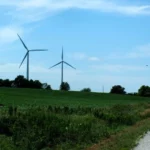


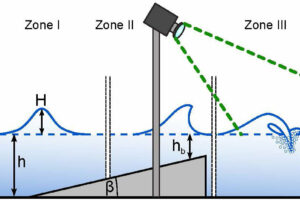
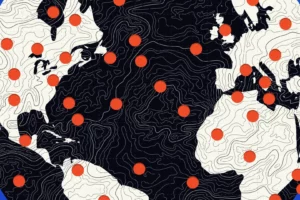
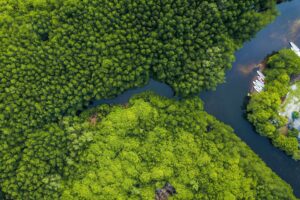
Add Comment